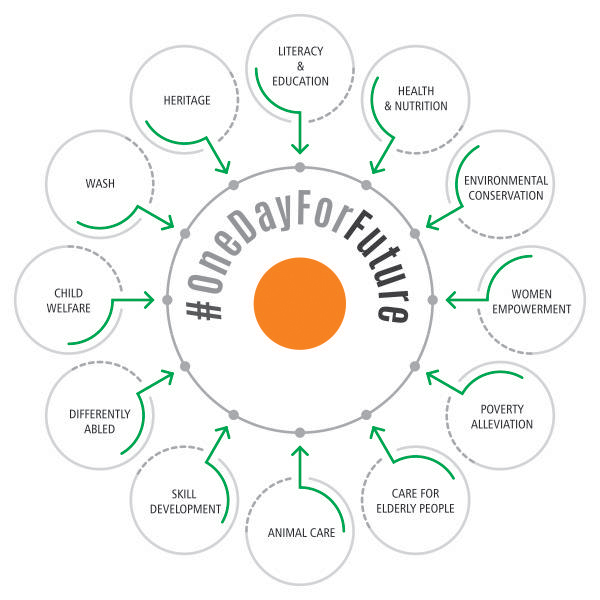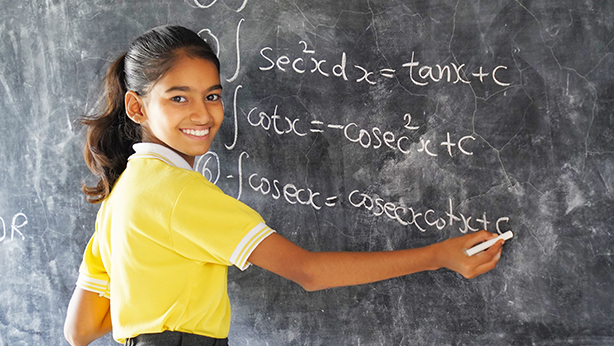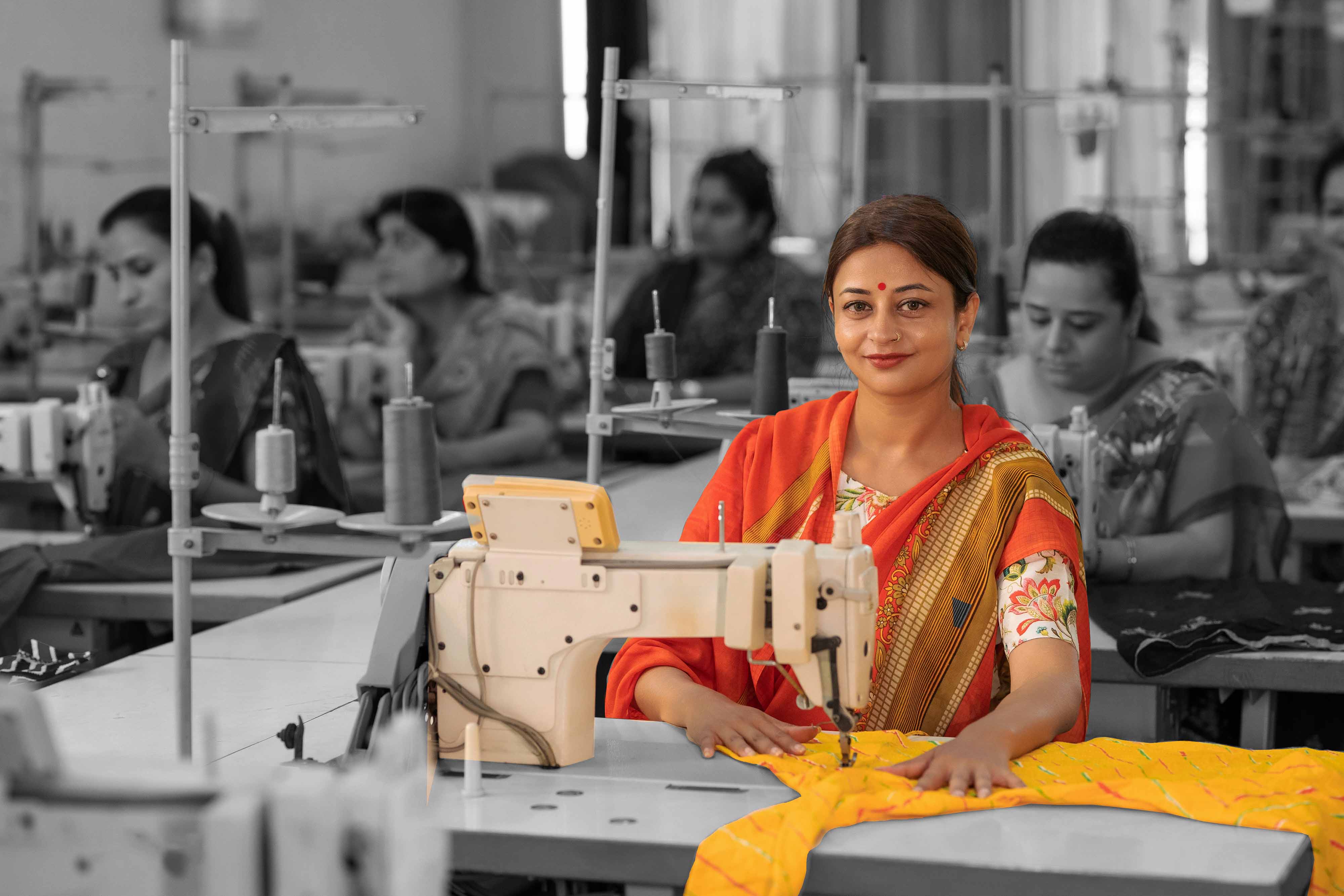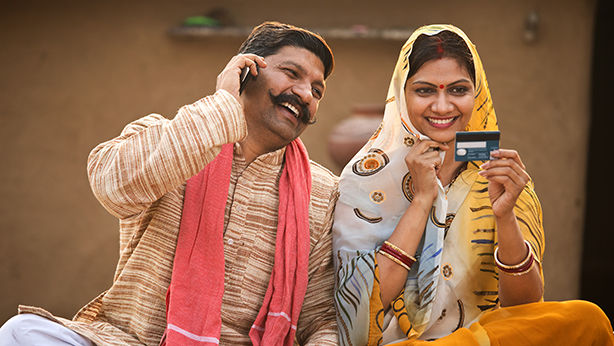Use your power to make a difference by joining our Let's Do Good initiative.
We need to Work Together for Poverty Reduction
Saturday , 01 January 2022- 5 min. read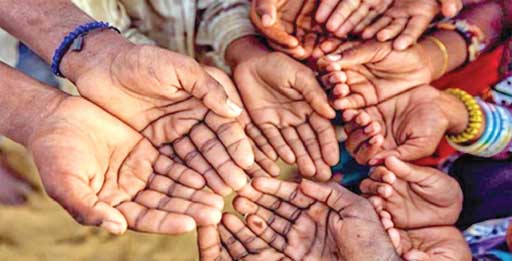
Poverty is defined as the condition in which individuals or families are unable to maintain a minimum standard of living due to a lack of financial resources and other essentials. It is a socio-economic condition with a variety of factors such as education, gender, caste, and sexual orientation, etc. factoring into it. Although different countries have different notions and criteria for who is understood to be poor, it is generally understood that people living in poverty lack access to proper shelter, clean water, medical attention, and healthy food. In addition to being an individual concern, poverty is also a societal issue as high poverty rates can inhibit economic growth and lead to increased cases of crime, unemployment, and urban decay.
Contrary to popular belief, poverty is not merely the lack of money. The scarcity of money is accompanied by an inability to access even the most basic resources required for human survival. This includes inadequate healthcare facilities, improper diet, inability to access clean water and food resources, illiteracy, etc. Social and gender inequality also factor into the accessibility of certain resources. Poverty leads such resources to be out of reach of the poor, and lack of these resources renders them unable to overcome poverty. Families and communities get trapped in this vicious cycle, and it becomes very rare for a person with a poor background to rise above this situation.
The United Nations 2030 Agenda has recognised the immediate need to eradicate poverty, especially extreme poverty, as an indispensable requirement for sustainable development. The first SDG (sustainable development goal) of the agenda aims to “end poverty in all its forms everywhere. It notes seven associated targets that are required to alleviate the present situation of poverty across the globe that include the following—
- Improving access to sustainable livelihoods, entrepreneurial opportunities and productive resources.
- Providing universal access to basic social services.
- Progressively developing social protection systems to support those who cannot support themselves.
- Empowering people living in poverty and their organizations.
- Addressing the disproportionate impact of poverty on women.
- Working with interested donors and recipients to allocate increased shares of ODA to poverty eradication.
- Intensifying international cooperation for poverty eradication.
The Government of India has taken several initiatives to tackle the various dimensions of poverty, enabling 24.82 crore individuals to escape from multidimensional poverty. This has brought India closer to achieving the SDG target of halving multidimensional poverty. This has been made possible through initiatives like Poshan Abhiyan and Anaemia Mukt Abhiyan for enhanced access to healthcare facilities, National Food Security Act and Pradhan Mantri Garib Kalyan Anna Yojana for distribution of food grains, Ujjwala Yojana for clean cooking fuel distribution, Saubhagya for improved electricity coverage, and Jan Jeevan Mission and Swachh Bharat Abhiyan for an overall elevation of living conditions. The progress across states has been varied, but states with traditionally high rates of poverty have performed remarkably well, and there has been a reduction in inter-state disparities in multidimensional poverty. There has also been an unprecedented decline in both urban and rural inequality. Official data has confirmed that extreme poverty has been eliminated in India. While this is an encouraging development, it also indicates that it is time for the nation to introduce a higher poverty line to ensure greater support to the genuine poor.
Why Collaboration is Key to Poverty Reduction
While governments work constantly for the betterment of poverty-ridden people, there exists a certain distance between a government’s theoretical understanding of a poor individual’s problems and the reality faced by the individual. Such nuances are better understood by civilians who are adept at facing the actual challenges that one encounters in their region. Civil society organisations and NGOs specialise in certain fields and, therefore, possess specialised knowledge and experience that can help alleviate situations of poverty. They are deeply rooted in local communities and locals find it easier to trust them with their concerns than government officials. Participation by commoners of various vocational backgrounds in such organisations also enables them to employ innovative and creative solutions, that can complement conventional methods implemented by the government. They are also efficient facilitators of awareness as they amplify voices of affected communities, and are better equipped than the government to handle changing needs and unexpected challenges. Collaboration between such organisations and the government allows for the efficient use of resources and expertise.
Collaboration plays a crucial role in poverty reduction efforts. When individuals, communities, organisations, and governments come together, they can pool their resources, expertise, and ideas to tackle the root causes of poverty. By working in synergy, we can leverage our collective strengths and make a more significant impact on those living in poverty.
- The Power of Partnerships in Poverty Reduction
In addition to efficient usage of resources, partnerships between organisations and governments ensure a system of mutual accountability. Welfare organisations can monitor the efficiency in the execution of government initiatives while focusing on targeted, community-driven approaches themselves. Mutual accountability facilitates transparency and focus on long-term goals for poverty reduction. Such partnerships empower communities to take active participation in initiatives concerning their welfare and thus foster a sense of control and sustainability in reducing poverty.
Partnerships are vital for effective poverty reduction strategies. By forming partnerships between governments, NGOs, businesses, and local communities, we can combine diverse perspectives and resources to develop comprehensive solutions. These partnerships foster innovation, collaboration, and sustainable development, leading to long-term poverty alleviation.
- Education as a Tool for Poverty Reduction
Education is a determinant factor in the issue of poverty. Lack of access to education has the power to inhibit a person’s social and economic progress. The inability to access education for a child usually stems from the family’s lack of financial resources, thus reinforcing the relationship of education poverty with income poverty. It is generally understood that the higher the level of education a person has received, the higher the level of income they may expect to earn. This is so because education imparts skills and knowledge that enable a person to work at positions of higher wage levels. It enables them to make informed decisions and encourages active participation in society, thus facilitating a break in the cycle of generational poverty.
By offering quality education to marginalized communities, we empower individuals with the knowledge and skills needed to break the cycle of poverty. Education creates pathways to better job opportunities, enhances health outcomes, and encourages social mobility. It is essential to prioritize educational initiatives and ensure equal access for everyone.
- Access to Healthcare: A Key Factor in Poverty Reduction
Healthcare is a fundamental human right, yet millions of people lack access to essential healthcare services. This lack of access perpetuates the cycle of poverty, as individuals and families grapple with preventable illnesses and healthcare expenses. Poverty breeds ill health, thus holding people back from putting in their best efforts to elevate their financial situation. The medical costs required for treatment, and the cost of commuting to hospitals that address their needs put massive financial pressure on families, often leaving them debt-ridden. They also have to face social discrimination at times and wait in long queues for hours to avail medical attention, cutting short the time they could dedicate to financially productive activities. We need to ascertain the presence of poor-friendly healthcare facilities in every part of the country as it is seen that government hospitals are usually overworked and unable to tend to the sheer number of poor people at their doors.
By collaborating to improve healthcare systems, broaden coverage, and endorse preventive care, we can significantly affect poverty reduction efforts. Investing in better healthcare facilities for the poor boosts their productivity and helps in increasing their household income.
- Creating Economic Opportunities for Sustainable Development
Establishing economic opportunities is crucial for sustainable poverty reduction. By nurturing entrepreneurship, supporting small businesses, and stimulating job creation, we empower individuals and communities to enhance their economic status. This includes providing access to microfinance, vocational training, and mentorship programmes. When people have access to viable economic opportunities, they can elevate themselves out of poverty.
Policymaking is a significant part of creating economic opportunities. The makers of policies should aim to empower the poor to move into new as well as existing areas of economic opportunity, permitting them better results of economic growth. The objective of such policies should be to create a stable economic environment that removes cultural, social and economic constraints, and makes full use of a country’s human resources. This will propel further development of the healthcare, nutrition and education sector and lead to sustainable development of the economy. The creation of new economic opportunities and the development of existing ones should, therefore, aim at pro-poor growth as opposed to growth that alienates those in poverty.
- Social Safety Nets: Protecting the Vulnerable
Technology has become an essential tool in poverty reduction efforts. Innovations in areas such as education, healthcare, and financial services can greatly improve the lives of those living in poverty. By leveraging technology, we can bridge the gap between the haves and have-nots, providing access to essential resources and opportunities for social and economic advancement. Social safety nets utilise resources at hand to reduce inequality and promote inclusive growth, thereby reducing poverty. Social safety nets protect families from extreme poverty and destitution by providing a minimum level of income. This is especially beneficial for large families with a single or no breadwinner. A minimum level of money provided to a family can be used for direct consumption or as fuel for economically productive purposes. Safety nets, thus, directly or indirectly boost productivity and act as a measure against cases of extreme poverty.
- Promoting Financial Inclusion and Economic Growth
Financial inclusion and social inclusion go hand in hand. Financial inclusion opens a number of advancement opportunities for the poor and aids in reducing poverty. It consists of all initiatives that governments or welfare organisations undertake to provide formal financial services that is accessible and affordable. This facilitates the alleviation of the multiple dimensions of poverty and promotes economic growth, employment generation, income equality, and sustainability. Vulnerable groups such as rural habitants, women, and low-income families benefit from financial inclusion as it enables them to access savings, and investable funds, and to accumulate wealth, while also raising the nation’s economic activity.
Financial inclusion is a critical component of poverty reduction, as it enables individuals and communities to participate in the economy and improve their livelihoods. By promoting access to financial services, savings, and credit, we can empower people to invest in their futures and contribute to economic growth. Ensuring that everyone has the opportunity to participate in the economy is vital for sustainable poverty reduction. Studies and research on the subject provide firm evidence that financial inclusion positively affects economic growth, financial stability, female empowerment, poverty alleviation, and income equality. It is, therefore, important for us to promote financial inclusion in our quest to reduce poverty.
- Fostering Inclusive Education for All
Education is a fundamental human right and a powerful tool for poverty reduction. Providing quality education for all, regardless of socioeconomic background, can help break the cycle of poverty and create a more equitable society. By investing in inclusive education systems and ensuring that all children have access to quality learning opportunities, we can unlock their potential and pave the way for a brighter future.
Education does not merely affect a person’s ability to earn better income, but significantly improves other areas of life such as shelter, sanitation, water, healthcare, etc. This is especially important for girls, who have traditionally been disadvantaged in our country’s education and social structure by being prohibited from education, or discouraged to pursue higher studies. An education system that takes into account the situation of girls enables them to take control of their own life decisions and gives them a better understanding of issues related to their life such as fertility, family welfare, and health. An inclusive education system empowers girls and all children who have been disadvantaged due to one or multiple social or financial reasons to find a way out of poverty. Fostering such inclusivity is, therefore, an essential tool for poverty reduction.
Poverty reduction requires a multifaceted approach that addresses the root NGO for poverty alleviation and promotes sustainable development. By prioritizing social safety nets, gender equality, rural development, technology, financial inclusion, and education, we can create a more inclusive and equitable world where no one is left behind.
The issue of poverty is complex and challenging. We cannot chalk it up solely to concerns of income levels. Poverty alleviation and reduction need to focus on its multidimensional nature. To truly address poverty, we must tackle its root causes, which often involve systemic issues such as income inequality, lack of access to education, and inadequate healthcare. By addressing these underlying problems, we can create a more equitable society that provides opportunities for all individuals to thrive. This requires a multifaceted approach, involving collaboration between governments, organisations, and communities, to create lasting change and break the cycle of poverty.
In this light, developmental work for poverty alleviation that solely focuses on providing financial aid to poor families falls short of actual progress. Such developmental work needs to focus on providing resources to poor people and tackling the various dimensions of poverty individually. This is something that everyone, including the general public, can contribute towards. We need to accept that poverty alleviation is not a straightforward procedure. It requires cooperation between the government and the public, as well as social organisations.

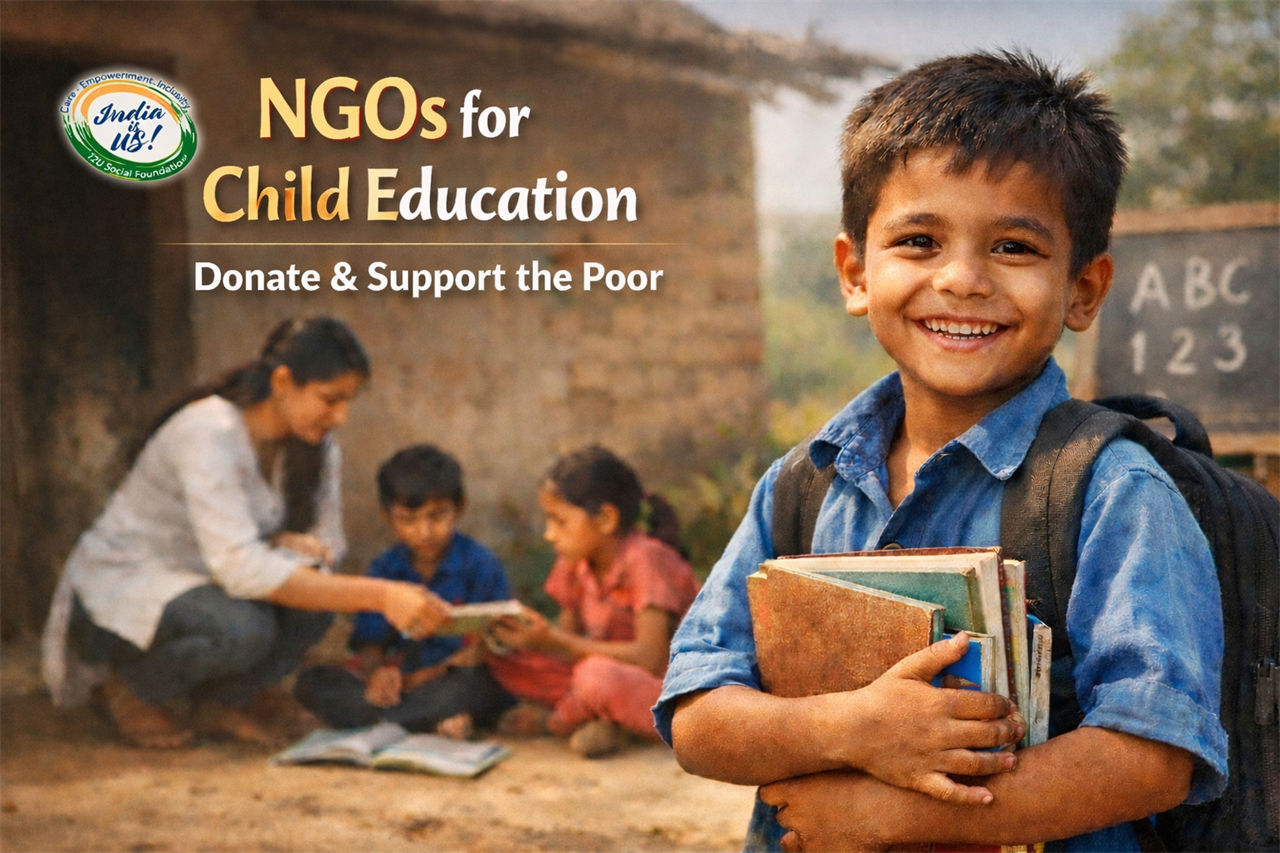
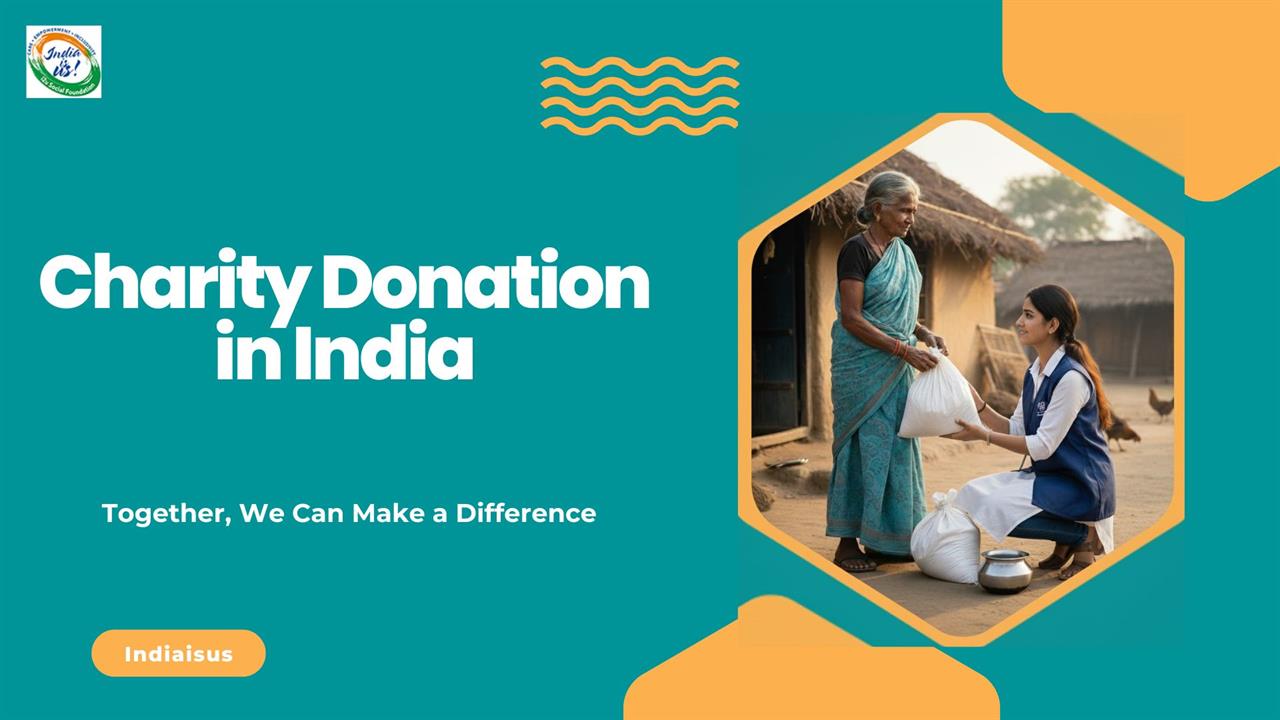

.jpeg)

